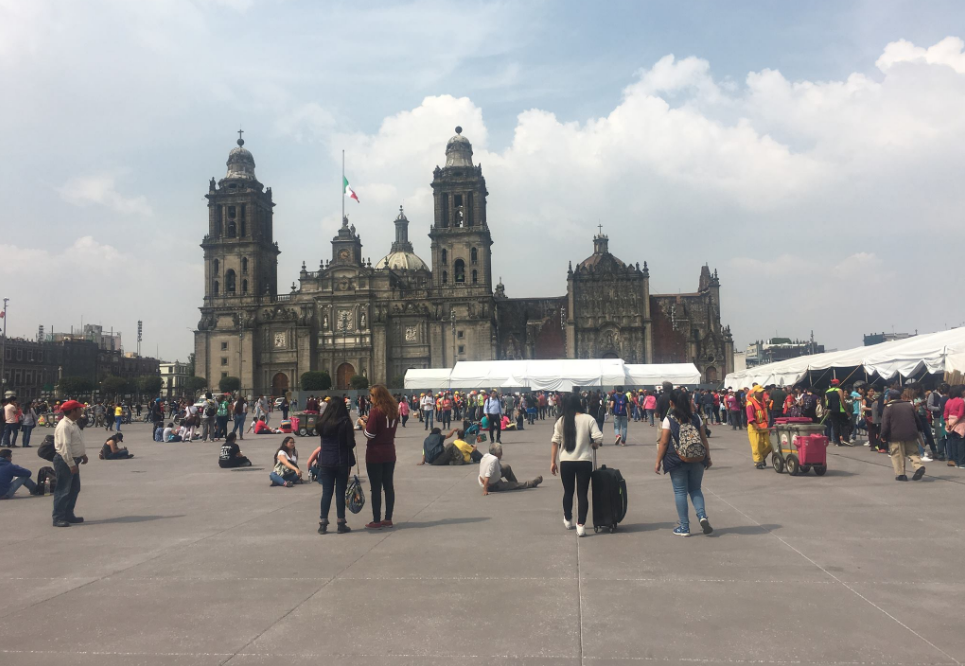As an editor, I rarely let my own voice be heard, concentrating instead on making sure that news articles run without bias and that opinion pieces reflect the writers’ or the paper’s perspective.
This time it’s different.
I was in Mexico, visiting the pyramids just outside Mexico City, on Tuesday, September 19, when a 7.1 magnitude earthquake rocked the metropolis.
My daughter and I were sitting on an ancient structure just yards from the Pyramid of the Sun when we felt the ground move, lightly admittedly, but definitively.
Five minutes later we learned what had just occurred, and realized just how lucky we were, to be where we were on that day of all days. We were out of the danger zone, and had missed the chaos and panic that followed the quake — there are really no words that I can muster up that quite express my intense relief on that front.
Nonetheless, returning to the capital city that evening, we had several days and ample opportunity to observe the situation, and were simultaneously saddened and impressed by what we saw. The loss of life was of course the most excruciating aspect of the earthquake, but the loss of livelihood for many residents of the city was also significant
My Facebook post the evening of the earthquake reflects my experience in the aftermath of the cataclysm.
“So sad this evening in Mexico City,” I wrote. “People walking slowly, stores and restaurants closed, debris in places. We didn’t see the really devastated areas but what we saw was sobering. The verve seems to have gone out of the city. People are in shock. Hard to believe that just two days ago, people were festive, enjoying Sunday in Chapultepec Park with their families. I grieve for this city and its people.”
By the morning, the mood through the city appeared to have changed. The airport had reopened the evening of the earthquake (though a portion of the terminal was sufficiently damaged that it was still off-limits four days later when we left), and the Metro had reopened, except one line.
Throughout Mexico City, we saw volunteers — in hardhats and carrying pickaxes as they headed to areas where their help was needed to move rubble; set up at tents to receive and distribute water, medicine and other necessities to those who had lost their homes; or ready to carry supplies in cars, on bikes, even on skateboard, wherever they were required.
The resilience and solidarity we witnessed were truly breathtaking — the spirit of this city in adversity was nothing short of awesome, as crowds of people pitched in to do what they could.
And, there was much to do — not only working to rescue those who had been trapped when structures fell, but generally making the city safe and passable again. And, depending on where you were, the scene varied between minor damage (as at our hotel on the Paseo de la Reforma) and major devastation (as in the Condesa neighborhood where the damage was widespread, and many streets were shut).
Gradually, the city returned to a semblance of its pre-earthquake self. Museums reopened, and more and more businesses opened their doors. Nonetheless, this is clearly a city and a country in need.
We donated directly to the relief effort on the ground, and will donate more, and while there are sadly many other places in need of help right now, thanks to the series of hurricanes that has brought devastation to Puerto Rico and other Caribbean islands as well as portions of the mainland U.S., I cannot forget our neighbor to the south which is suffering.
For those who wish, a New York Times article (https://nyti.ms/2xyyh1M) provides information on organizations accepting donations.



































